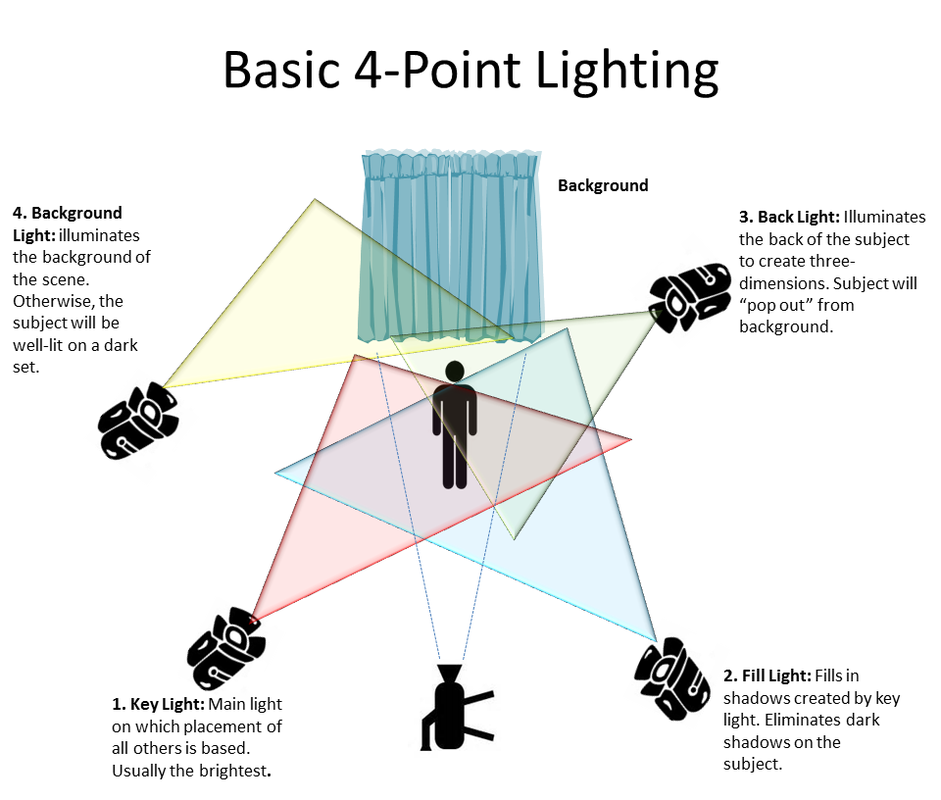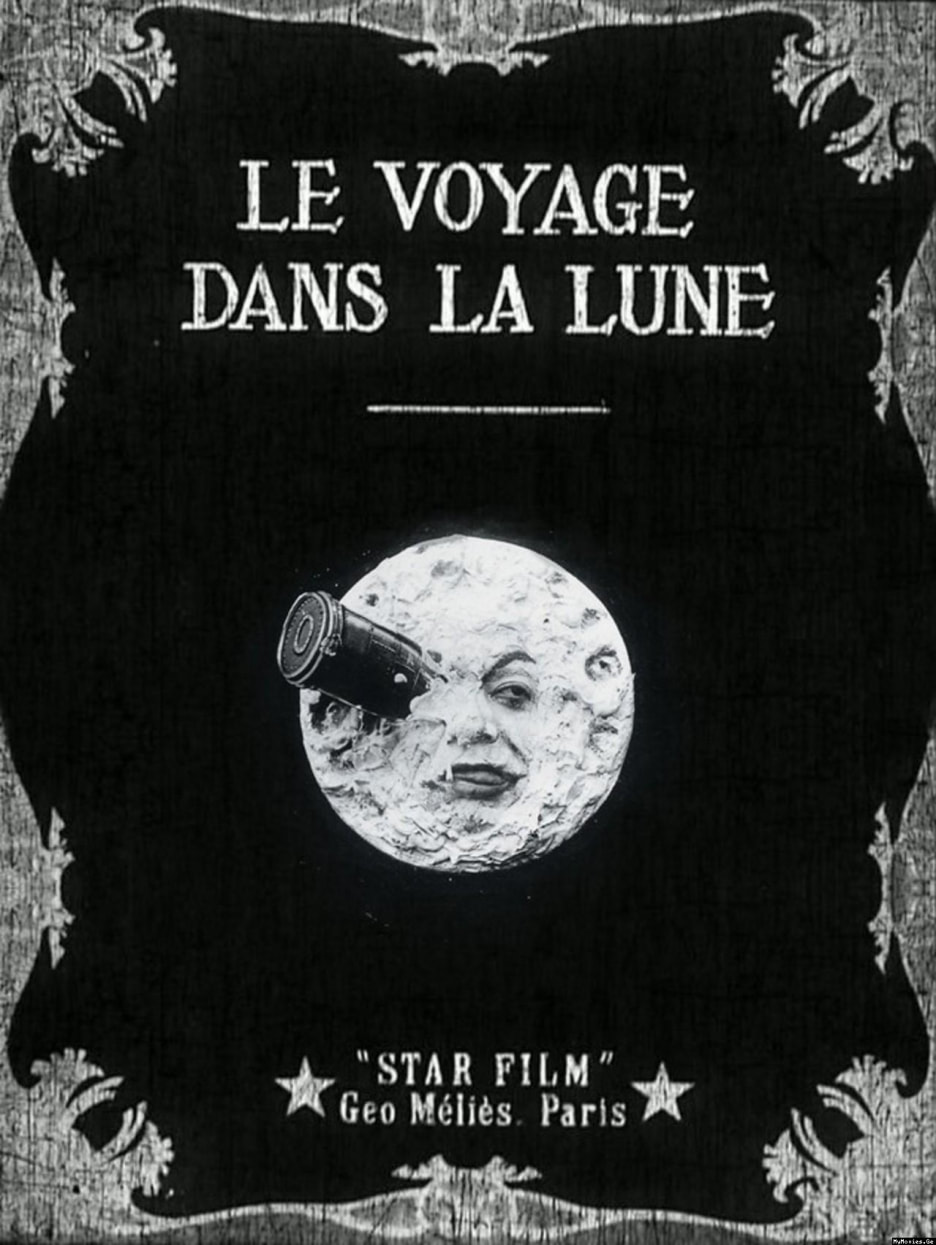Fall Mid-Term |
Unit 7: Widescreen & the American New Wave |
Essential Questions:
What was the effect of television on cinema? What does screen size do to directorial choices and the visual storytelling of film? Key Terms: -Academy ratio -Standard screen format -Widescreen -Letterbox -Pan and scan -CinemaScope -Aspect ratios of 1:1.33, 1:1.85, & 1:2.35 -Rule of Thirds -High Concept -Low Concept Learning Activities: Creative Journal: Describe the themes in film you are most drawn to. Develop a three act plot structure that would bring your favorite themes to life. Complete the task by developing a log-line that encapsulates the plot and theme. Ratio Rationale: Choose to shoot a 30 second music video in one of three aspect ratios. Edit to best utilize the mise-en-scène. Create a commentary reel where you discuss the process of creating your music video. Career Catalog: Job description, training, & opportunities for: Music Supervisor & Music Producer Blog Reflection: Write a response to this unit’s essential question(s). Use moments of success and challenge from the learning activities to exemplify your understanding. |
Widescreen vs. Pan & Scan
Aspect Ratios & How They're Used
Color in Storytelling
| ||||||
Unit 6:
|
Essential Question:
What distinguishes the style of post-war film genres? Key Terms: -Film Noir -On location shooting -Neorealism -Nonprofessional actors -Real space & real time -“The Master of Suspense” -Colorization -Reverse angle -Offscreen space -Cinematic voyeurism Learning Activities: Creative Journal: Assemble a glossary of lighting terms, highlight your favorite film genres Genre Crossover: Choose a familiar storybook plot. Then, remodel and retell the story’s plot in one of the three film genres covered, as well as a genre of your choosing. Develop a film that capitalizes on the genres' most distinctive features. Career Catalog: Job description, training, & opportunities for: Set Designer, Film Producer Blog Reflection: Write a response to this unit’s essential question(s). Use moments of success and challenge from the learning activities to exemplify your understanding. |
Film Noir Examples
Neorealism Examples
Hitchcock Examples
| ||||||
Unit 5: Breaking Rules & Inventing New Ones |
Essential Question:
How do WWII era films change the way we use cinematic language? Key Terms: -High contrast lighting -Deep focus -Soft focus -Overlapping dialogue -Flashback cuts through time Learning Activities: Creative Journal: Design a set for a hypothetical TV show. Create a creature make-up design. Flash Forward: Tell the story of many years in the span of only a few moments. Use clues within the mise-en-scène to convey the passage of time and the changes of characters. Career Catalog: Job description, training, & opportunities for: Lighting Designer, Makeup Artist Blog Reflection: Write a response to this unit’s essential question(s). Use moments of success and challenge from the learning activities to exemplify your understanding. |
Citizen Kane (Orson Welles, 1941)
scene - Kane's boyhood Three Point Lighting
|
Unit 4: Breaking the Silence |
Essential Question:
How did Hollywood change with the addition of sound? Key Terms: -Screenplay -Storyboarding -Vitaphone -The Studio System -The Hollywood Production Code -Dissolve -The Technique of Separation Learning Activities: Creative Journal: Create a storyboard that matches your recent montage project. Draw each shot to show what is seen within the mise-en-scène. Add the type of shot and/or camera movement as well. Project: Sound Story: Create a story in AfterEffects using only sounds to convey a beginning, middle, and end. Career Catalog: Research job description, training, & opportunities for: Sound Engineer Blog Reflection: Write a response to this unit’s essential question(s). Use moments of success and challenge from the learning activities to exemplify your understanding. |
The Jazz Singer
(Alan Crosland, 1927) |
Unit 3: Mastering the Shot |
Essential Questions:
How did German Expressionism and montage change cinema? Key Terms: -German Expressionism -The 180 Degree Line -Montage -Creating Spectator -Master Shot -Coverage -Establishing Shot -Insert Shot -Reaction Shot -Freeze Frame -Superimpose -Point-of-View Shot -Reverse Angle Shot -Slow Disclosure Shot -Fast-Motion Shot -Slow-Motion Shot Learning Activities: Creative Journal: 1. Create a screenplay for a brief TV Show Pilot. 2. Design a costume collection for your TV Show Pilot's cast of characters. TV Show Pilot: Create a story to film, focusing on a strong master shot and the listed coverage shots. Focus on using montage to allow the spectator to create story connections. Career Catalog: Job description, training, & opportunities for: Film Editor, Costume Designer Blog Reflection: Write a response to this unit’s essential question(s). Use moments of success and challenge from the learning activities to exemplify your understanding. |
|
Unit 2: Grammar of Film |
Essential Question:
Why is cinema both the most realistic and also the most artificial of the arts? Key Terms: -Narrative Film -Wide Shot -Full Shot -¾ Shot -Medium Shot -Medium Closeup -Close-up -Extreme Closeup -Long Shot -Two-Shot -Over-the-Shoulder -High-Angle Shot -Low-Angle Shot -Oblique Shot -Handheld -Tracking Shot -Pan -Tilt -Zoom In -Zoom Out Learning Activities: Creative Journal & Homework: Create a poster advertisement making wise use of the principles and elements of art. Begin with the brainstorming and drafting worksheet. From there, create a fully realized poster no smaller than 8.5"x11". Commercial: Work in a team to capture of each of the listed shots in to advertise an object of your choosing. Career Catalog: Cinematographer, Production Designer Blog Reflection: Write a response to this unit’s essential question(s). Use moments of success and challenge from the learning activities to exemplify your understanding. |
| ||||||
Unit 1: The Origins of Filmmaking |
Essential Question:
How do filmmakers develop and convey stories within the mise-en-scène? Key Terms: -Persistence of vision -24 frames per second -Cut -Shot -Take -Set-up -Mise-en-scène -Documentary Film Learning Activities: Creative Journal: 1. Notice, Wonder, Discover, Imagine: Create a short story based on an art piece inspiration. 2. Develop a script of dialogue between two characters. 3. Choose a character to analyze in depth. One-Shot Story: Create and film a one-shot "story" in which something interesting happens. Multi-Shot Story: Re-shoot your one-shot story from a number of different perspectives. Then, use this additional footage to cut into your original one-shot story. Career Catalog: In an ongoing Google Slide Presentation research and note the job description, training, & opportunities for: Film Director, Screen Actor. Blog Reflection: Write a response to this unit’s essential question(s). Use moments of success and challenge from the learning activities to exemplify your understanding. |
Workers Leaving the Lumière Factory
(Louis Lumière, 1895) Arrival of Train at La Ciotat
(Louis Lumière, 1896) |





